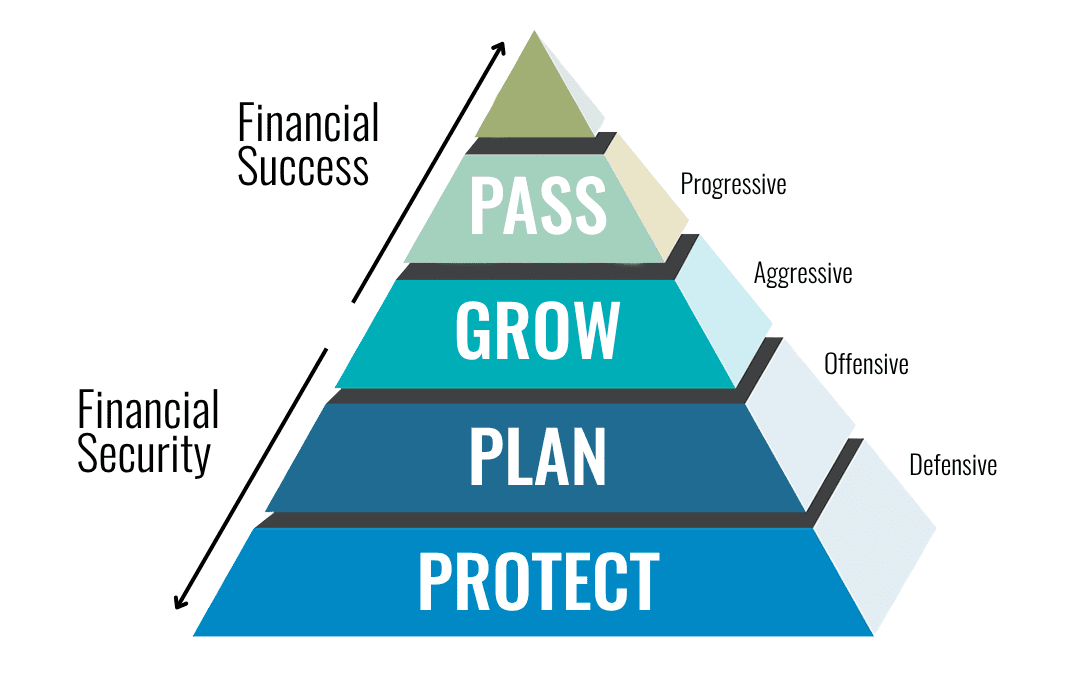Most people focus on how much their investments are growing. But very few stop to ask the real question:
How much of that growth do you actually get to keep?
Every dollar you earn in your investments is sitting in one of three tax “buckets.” And each of those buckets decides how that money gets taxed… and what’s left over in your hands at the end.
So while your account might look good on paper, the outcome can be wildly different depending on how it’s taxed.
So, what exactly are these buckets?
At the most basic level, every account you invest in falls into one of three categories:
- Taxable (Tax Now)
- Tax-Deferred (Tax Later)
- Tax-Free (Tax Never)
These buckets matter more than most people realize—because they shape your actual results. Let’s break down how they work.
Taxable: The “Easy Access, Less Efficient” Bucket
This is where most people start. Your regular savings account, your brokerage account—any place where your money grows, but where Uncle Sam takes a cut along the way.
Here’s how it works: you put in money you’ve already paid taxes on. Then each year, you get taxed on any interest, dividends, or gains—in many cases even if you don’t take the money out. That means your compounding gets chipped away by taxes, year after year.
Sure, you have flexibility—you can access your money anytime without penalties. But that freedom comes at a cost. Your growth is constantly being slowed by taxes.
This bucket isn’t bad—it just works better for short-term goals or emergency funds. Relying too heavily on it for long-term wealth-building? That’s where you might be leaving money on the table.
Tax-Deferred: The “Save Now, Pay Later” Bucket
Think 401(k)s, Traditional IRAs, deferred annuities. This is where you put money in today, get a tax break up front and then let it grow tax-deferred until you retire.
It sounds great at first: no taxes while your money grows, and you get to reduce your taxable income now. But there’s a catch. Every dollar you take out later gets taxed as regular income. Not capital gains rate—ordinary income rate which is higher than capital gains rate.
If your tax rate in retirement ends up being high, or if tax laws change in the future (and they probably will), you could end up handing back a big chunk of your savings to the IRS.
So yes, you may have more money on paper—but you don’t know how much of it is truly yours until you go to withdraw it.
Tax-Free: The “You Paid Up Front, Now You’re Clear” Bucket
This is the one most people either don’t know about—or don’t fully understand. And that’s a shame, because when used right, it can be incredibly powerful.
Tax-free accounts include Roth IRAs, Roth 401(k)s, and properly structured cash value life insurance. You pay taxes on the money before you put it in. But after that? Your growth is tax-free. Your withdrawals are tax-free. And there are no surprise tax bills waiting in retirement.
You’re choosing to pay your taxes now, when rates might be lower, and give your future self more certainty and control.
Of course, this bucket has rules. Contribution limits, income restrictions, setup complexity if you’re using life insurance. But for many people, it’s worth exploring—especially if you want to protect yourself from rising taxes down the road.
What You Actually Keep: The Real Impact of Taxes on Growth
Let’s say over time, you save $400,000 that you want to invest toward your future.
Depending on the account type, that $400K will take a different path—because of how taxes are handled on the way in, during growth, and when you take the money out. And that tax treatment makes a huge difference in what you’ll end up with.
Here’s how it plays out.
Taxable Account
You pay your income tax first. At a 25% rate, that leaves you with $300,000 to invest.
But here’s where it gets tricky. Each year, part of your growth gets taxed—capital gains, interest, and dividends. That ongoing tax drag quietly slows down your compounding.
Assuming an average return of 7% reduced to ~5.5% after taxes, your $300K grows to about $1.15 million over 25 years. You’ll also owe capital gains tax on roughly $850K of that growth (15% = ~$127K in taxes).
Net result: Around $1.02 million stays in your hands.
Tax-Deferred Account
This time, you invest the full $400,000 pre-tax—you don’t pay taxes up front.
With no tax drag, your money compounds at the full 7%. After 25 years, that gives you around $2.17 million. But every dollar is taxed as income when you withdraw. At 25%, that’s about $543K in taxes.
Net result: You keep roughly $1.63 million.
Tax-Free Account
Here, just like the taxable account, you pay income tax up front. That leaves you with $300,000 to invest—same net amount.
But from there, your money grows at the full 7% rate without tax drag. And, if you follow the rules, your withdrawals are completely tax-free.
Your $300K grows to about $1.52 million, and you get to keep every penny.
Side-by-Side Comparison
Each option starts from the same amount—$400,000.
But where it ends up? Very different.

What This Means
When people talk about investment returns, they’re usually thinking in pre-tax numbers. But what you actually keep is shaped by where your money sits—and how that account is taxed.
It’s not just about what you earn. It’s about how much of it end up in your hands.





